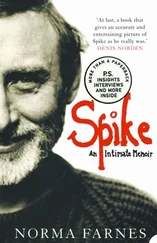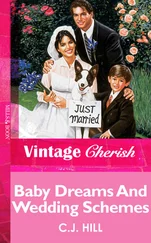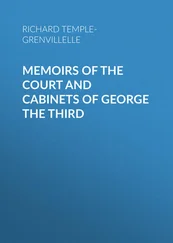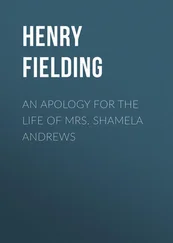The long summer and early fall away from Washington was about to come to an end, and I must admit I was a little bit sad about it. I thoroughly enjoyed being “on the road” where there was no routine, and while at times it was more challenging to protect Mrs. Kennedy, I thrived on the constant activity. The time spent in Hyannis Port, Ravello, Amalfi, Capri, New York City, and Newport had been wonderful. And because I had shared all these adventures with Mrs. Kennedy, she and I were closer than ever before. We enjoyed each other’s company, I knew how she liked to have things done, and we trusted each other implicitly.
Finally, on October 9, 1962, we were headed back to the White House. The Caroline was unavailable, so Mrs. Kennedy, Caroline, John, and I, along with the Kiddie Detail agents and several staff members, boarded a U.S. Air Force plane and flew to National Airport in Washington, D.C.
At one point during the flight Mrs. Kennedy came to me and asked, “Mr. Hill, will there be any press at the airport when we arrive in Washington?”
“I honestly don’t know, Mrs. Kennedy,” I said, “but let me see what I can find out about the situation before we land.”
“I really do not want any photos taken.”
I understood her concern because this would be the first time in more than three months that she and the two children would be seen in public together. In all likelihood there would be a swarm of photographers waiting to get the shot of the three of them getting off the plane. It was also somewhat unusual for us to be flying on a military aircraft without the president aboard, and I certainly didn’t want that to stir up any controversy, either.
“Okay. I understand. I’ll make the appropriate arrangements.”
I contacted the U.S. Secret Service office at the White House and requested a restricted area be established for our arrival. Secret Service personnel would be there with a car for Mrs. Kennedy and the children, White House cars for staff, and a baggage truck. When we landed, the pilot taxied the plane to the spot we had agreed on, and I could see that all the necessary vehicles were standing by, just as I had arranged, behind a gate waiting for the all-clear to proceed toward the plane.
I was standing behind Mrs. Kennedy as she began going down the steps to the tarmac, with Caroline and John in front of her, when I noticed a motorcycle following our vehicles through the gate and toward the plane. There were two people on the motorcycle—a courier driving and a photographer I recognized, holding his camera up and shooting one shot after another.
Goddamnit.
This particular photographer had been overly aggressive and intrusive in the past, and I had had it with him.
As I got to the bottom of the steps, I ran toward him, grabbed hold of him, pulled the camera out of his hands, and ripped the film out of the camera.
“What the hell are you doing?!” he screamed at me.
“You’re in a restricted area and I’m confiscating your film,” I said.
I saw two more canisters of film in his chest pocket, and without saying anything, I grabbed those and shoved them in my own jacket pocket.
He was really putting up a fuss and by this time the airport police had come over.
“He’s all yours,” I said.
By this time Mrs. Kennedy, John, and Caroline were in the car, so I took my place in the front passenger seat. I turned around and said, “Sorry about that, Mrs. Kennedy. That was Roddy Mims from UPI. We’ve had trouble with him in the past.”
I pulled out the canisters of film from my pocket and showed them to her. “But I got the film, which, as you could tell, he wasn’t happy about.”
She smiled and said, “Well I’m happy about it. Thank you so much, Mr. Hill. I really appreciate the fact that you went after him.”
I hated that the children had to see that confrontation, but it didn’t seem to faze them. The matter was forgotten, as Caroline chattered away to her mother on the ride back to the White House.
Shortly after arriving at the White House, I was notified that the president wanted to see me in the Oval Office immediately.
Geez. Word travels fast.
When I walked into the Oval Office, President Kennedy and Press Secretary Pierre Salinger were standing there, waiting for me.
The president had his arms folded and got right to the point.
“What happened at National Airport, Clint?” he asked.
I explained Mrs. Kennedy’s concerns, and what I had done to arrange a private arrival.
“Then, Mr. President, photographer Roddy Mims came riding into the area we had restricted, on the back of a motorcycle driven by a courier. I stopped him, confiscated his film, and turned him over to the airport police.”
“Look, Clint, I know your intentions were honorable, but the press are making an issue out of it and we have to make a decision as to how to handle it.”
“I know Roddy can be pushy and obnoxious,” Salinger interjected, “but we have to resolve the issue before it gets blown way out of proportion.”
President Kennedy had unfolded his arms and had an apologetic look on his face.
“Clint,” the president said, “I’m sorry, but I’m afraid you are going to be the scapegoat in this case. You’ll have to take the blame.”
“I understand,” I said. “I didn’t mean to cause a problem for you, Mr. President.”
“It’s all right. Pierre will take care of it,” President Kennedy said. “And thank you for always looking after the best interests of Mrs. Kennedy and the children, Clint. I honestly do appreciate it.”
“Thank you, Mr. President,” I said.
Pierre Salinger told the press that there had been a “misunderstanding.” The film would be returned to the company the photographer worked for, and the matter would be considered closed.
I didn’t like the decision, but I accepted it knowing that the president knew my intentions were good, and that for public relations reasons, the finger had to be pointed somewhere. They didn’t want the Office of the President or the White House press office blamed for denying the press access.
It was one of those situations in which I learned that my obligations and loyalty to Mrs. Kennedy would have to be weighed against how willing I was to risk being chastised for my actions by her husband.
I also had to explain the situation to the assistant chief of the Secret Service and the Special Agent in Charge of the White House Detail, but the two of them agreed that I had acted appropriately, and I was advised to continue doing my job as I had in the past. My name appeared in the newspapers along with the story, and while the photographer claimed I told him he was under arrest, that simply wasn’t true. The furor died down after a couple of days and was never mentioned again.
IT WAS AROUND this time that I felt I had finally found the right person to be my assistant—Paul “Debut” Landis from the Kiddie Detail. During our three weeks in Italy, I had had the chance to evaluate how he worked in a foreign environment and because Caroline was with us so much, I got to see how he and Mrs. Kennedy interacted as well.
Nobody ever explained to me why Agent Jeffries was removed from Mrs. Kennedy’s detail, but I had a sense that personality conflict had something to do with it, and I wanted to make sure that I chose someone in whom Mrs. Kennedy had confidence. Even though he was the youngest agent on the detail, Paul was extremely conscientious, easily able to adapt to changing situations—a necessity if you were going to be protecting Mrs. Kennedy—and, perhaps just as important, we worked well together as a team. He happily accepted the position and it was like a breath of fresh air to have someone working with me after having only temporary assistance for the previous seven months. We brought in an agent named Tom Wells from the Miami office to replace Paul on the Kiddie Detail, and once we were back at full strength—two agents with Mrs. Kennedy and three with the children—I had a renewed sense of confidence in our ability to do the job properly and effectively.
Читать дальше











